Transform your space with our curated collection of minimalist living room ideas. Discover expert tips on furniture, colors, and layouts for a serene, clutter-free home in 2025.Your Attractive Heading
Introduction:
Have you also learned that 78% of People think that having an organized and clutter free home makes them less stressed especially when the living room is clutter free? I am in total agreement! Being an interior designer, I have learnt that minimalist living rooms are not only effective in changing the look of a home but also the mood of the home. Whether you prefer the minimalism with a touch of warmth from Scandinavian design or the intentional minimalism from Japanese design, I would like to present to you my best minimalist living room ideas that combine beauty with practicality. Let’s design a home that makes you feel refreshed every time you enter into it!
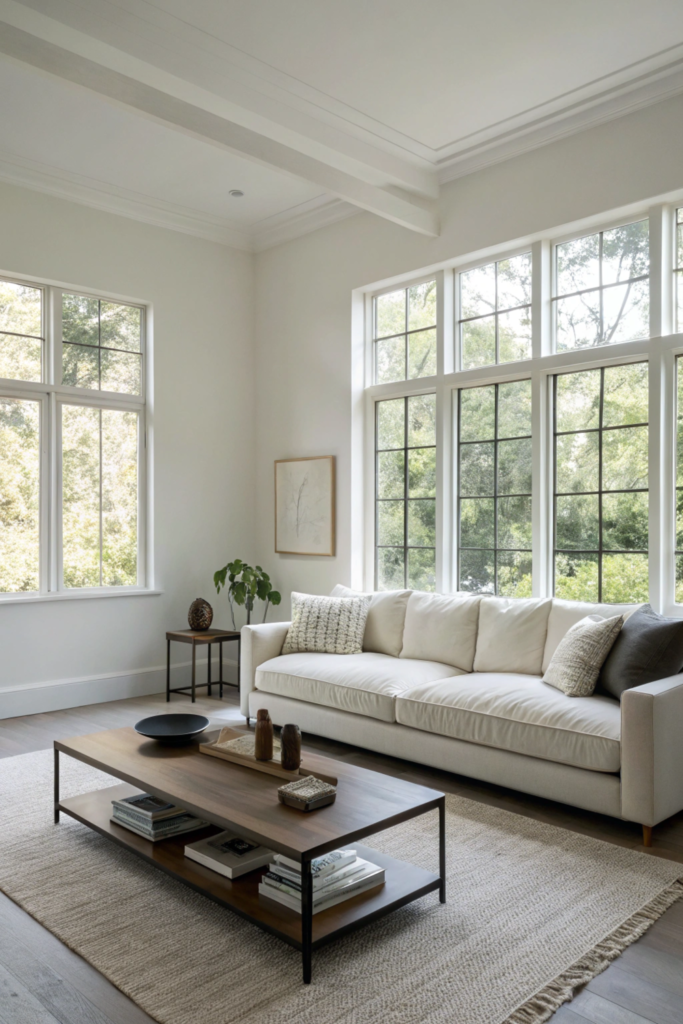
Essential Elements of Minimalist Living Room Design
1.Understanding the “Less is More” Philosophy
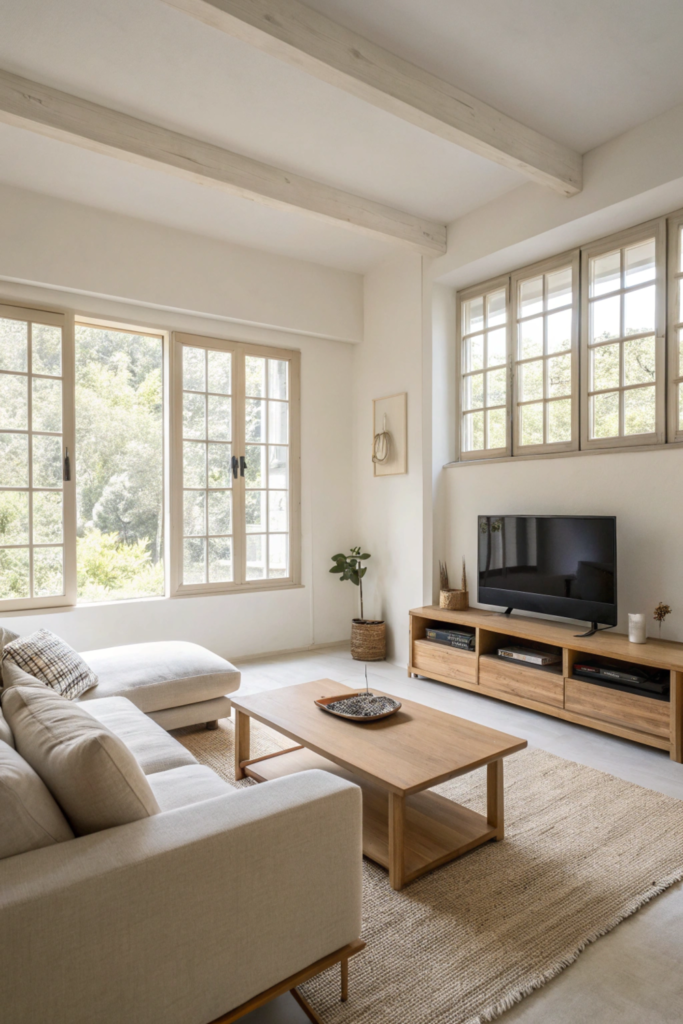
The essence of minimalist design lies in the profound understanding that simplicity creates both visual harmony and mental peace. This fundamental philosophy guides every aspect of minimalist living room design:
2.Purposeful Selection
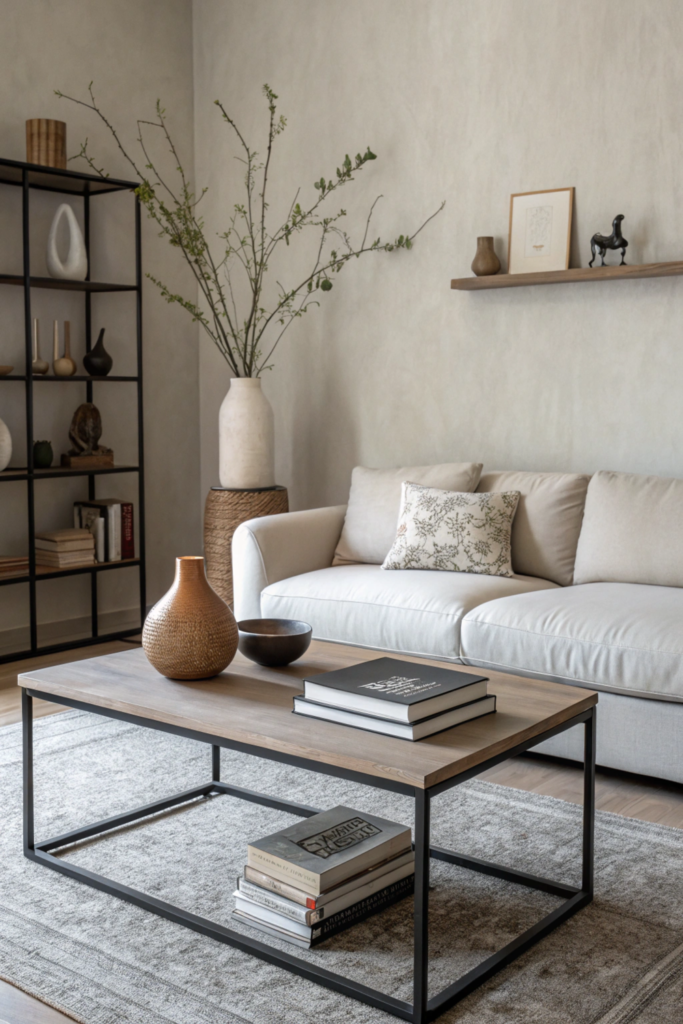
Every item in a minimalist living room must earn its place through either function or meaningful significance. This intentional curation ensures that each element contributes to the space’s overall purpose and aesthetic integrity.
3.Visual Breathing Room
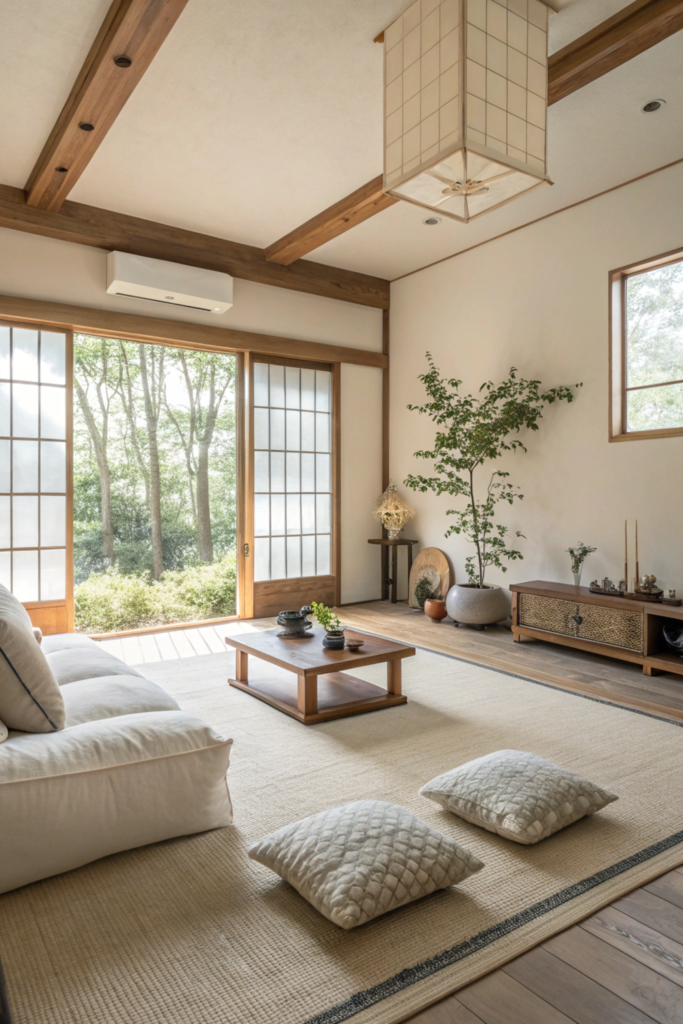
Creating deliberate empty spaces is not about leaving areas bare, but rather about allowing the eye to rest and the mind to find tranquility. These thoughtful voids become as important as the objects themselves.
4.Quality Over Quantity
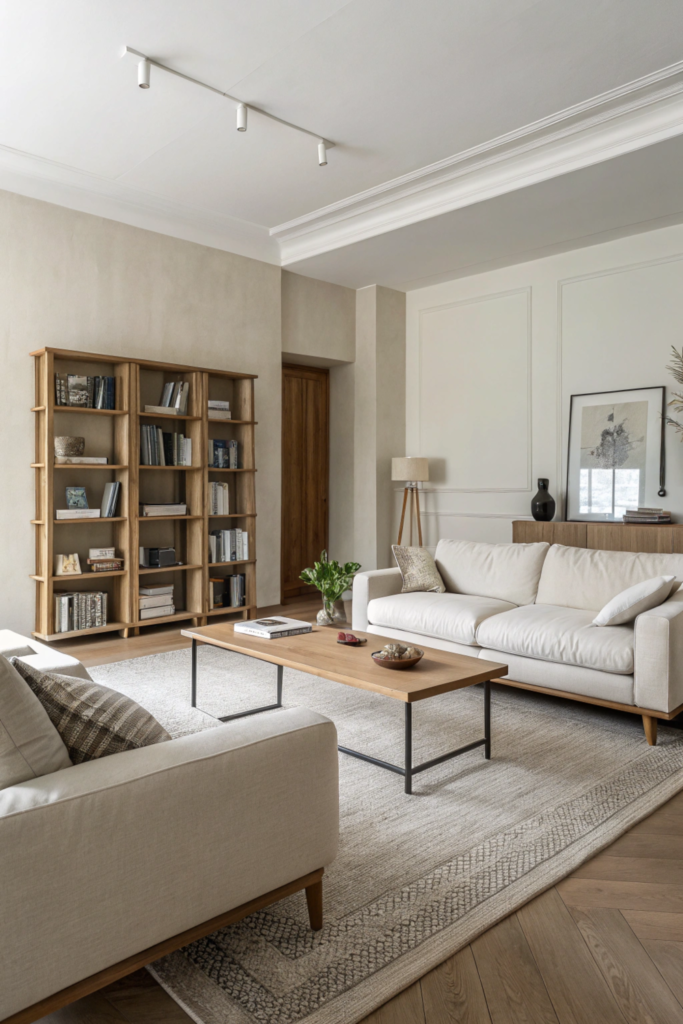
In minimalist design, fewer pieces of higher quality create more impact than numerous lesser items. This approach emphasizes investing in timeless pieces that offer both durability and enduring style.
5.Simplified Decision Making
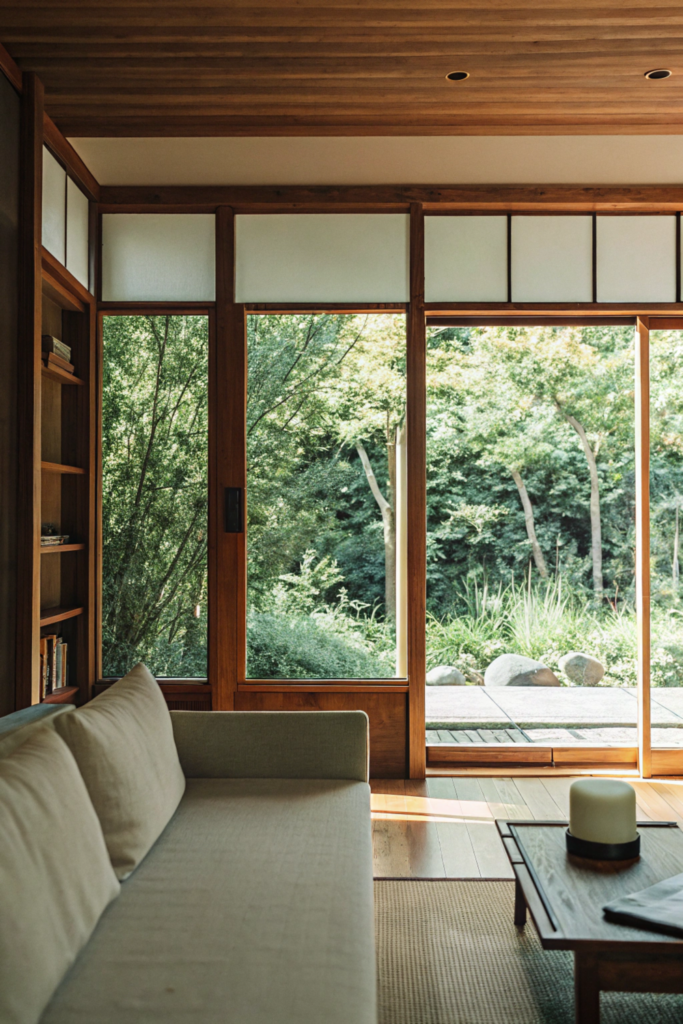
By maintaining fewer items, you reduce both visual and mental clutter, creating a space that promotes clarity and calm in daily life.
Key Design Principles
1.Functionality
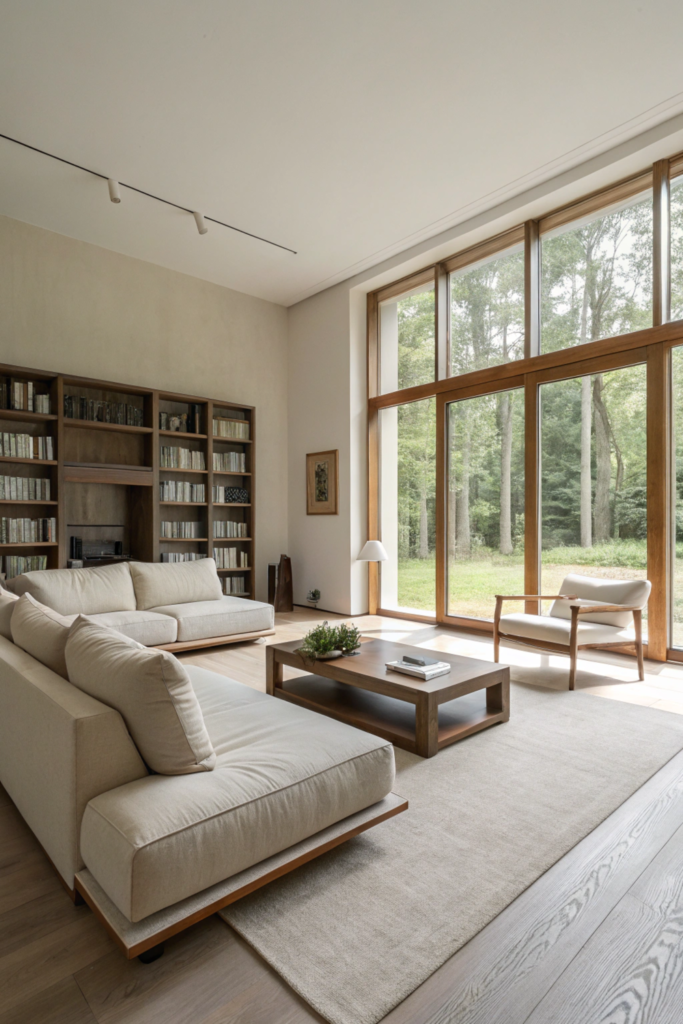
Minimalist living rooms prioritize practical utility without sacrificing aesthetic appeal:
- Each element serves a clear, defined purpose
- Furniture pieces often serve multiple functions
- Storage solutions blend seamlessly with the architecture
- Traffic patterns remain clear and intuitive
2.Clean Lines
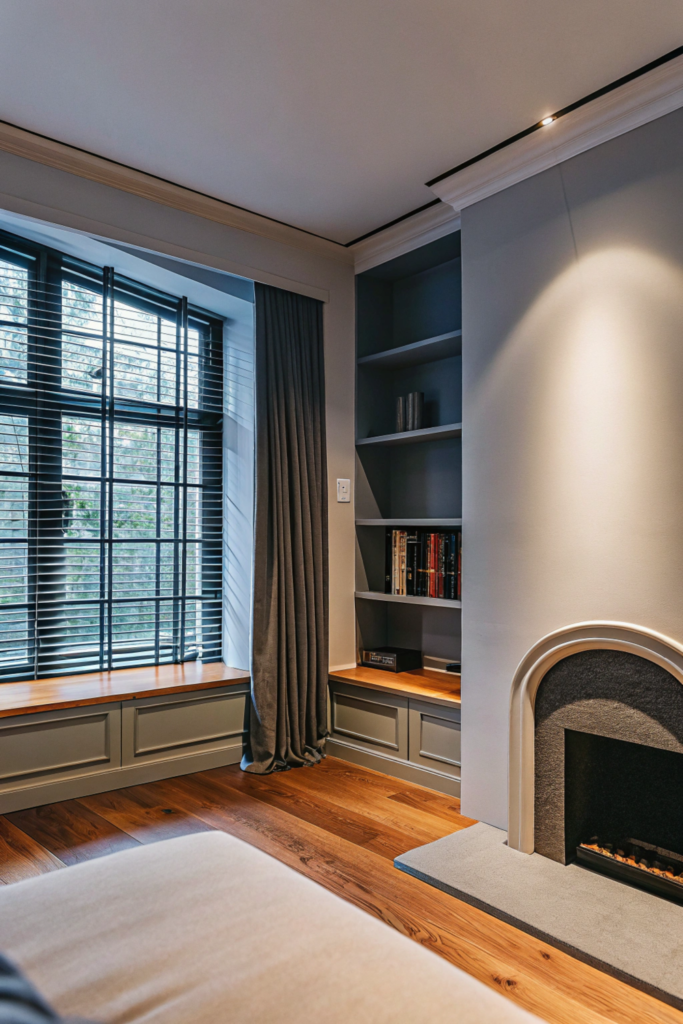
The visual language of minimalism relies on straightforward geometric forms:
- Furniture features simple, unadorned silhouettes
- Architectural elements become design features
- Window treatments maintain geometric simplicity
- Built-in elements follow continuous, unbroken lines
3.Negative Space
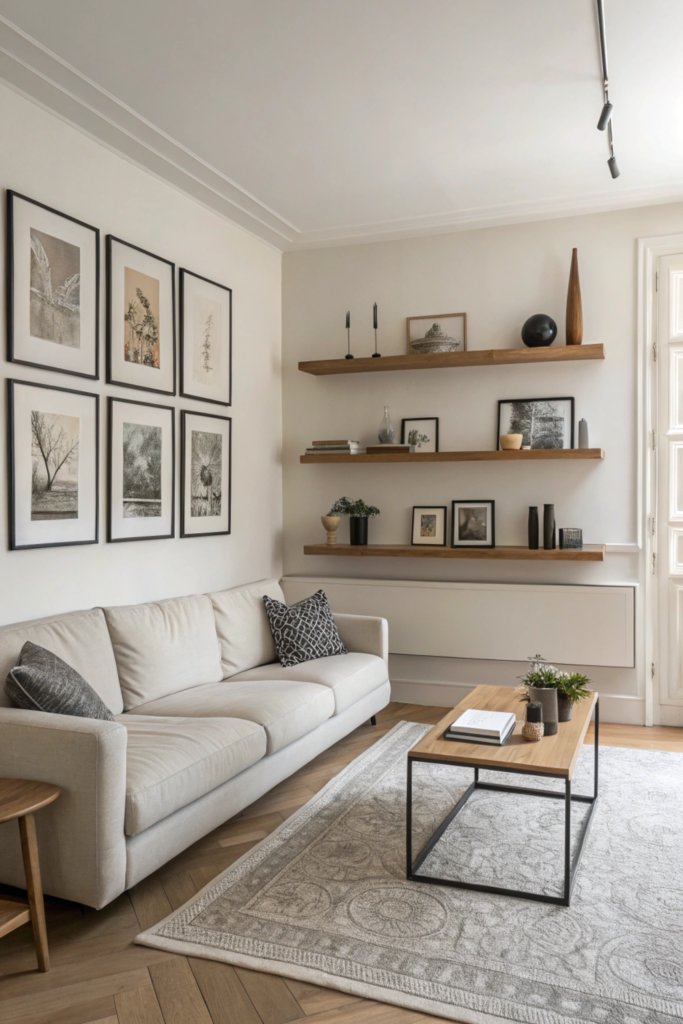
Strategic use of empty space creates visual balance:
- Wall areas incorporate planned empty spaces
- Furniture placement allows for visual breathing room
- Surfaces remain largely clear of decorative objects
- Spacing between pieces creates rhythm and flow
Color Theory
1.Base Colors
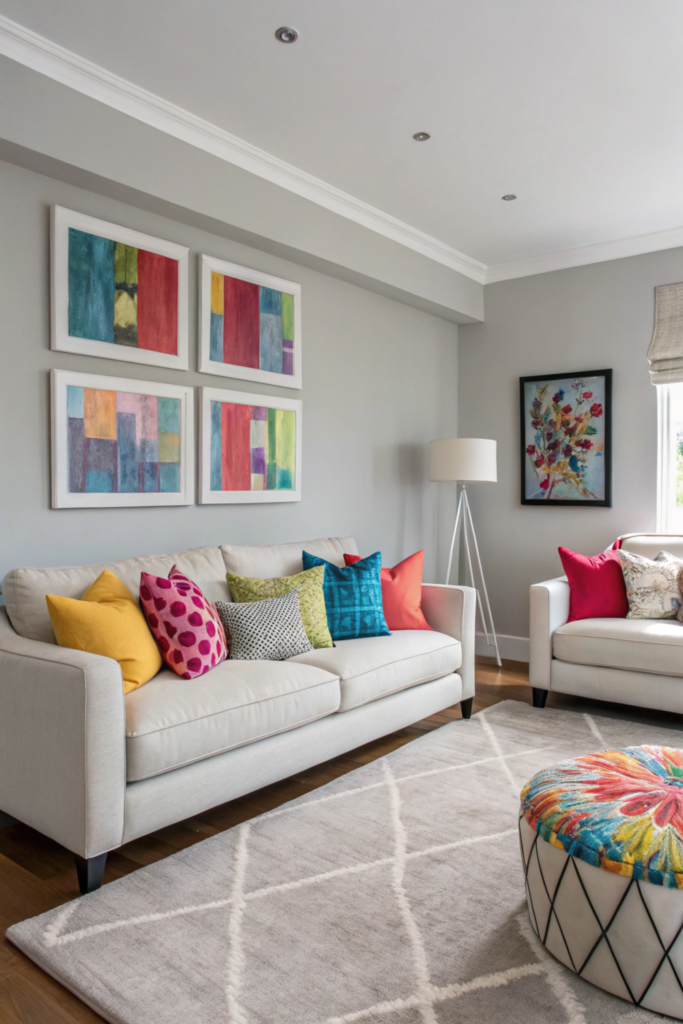
The foundation of minimalist color schemes:
- Neutral tones create a calm canvas
- Monochromatic palettes provide sophistication
- Natural material colors add warmth
- Undertones determine overall temperature
2.Accent Colors
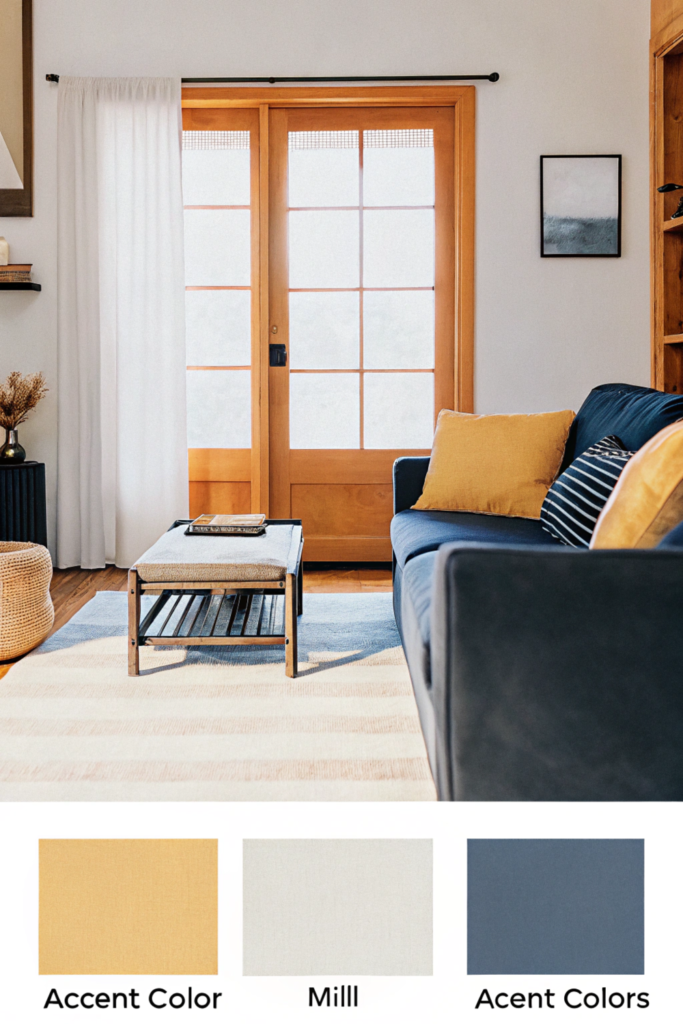
Strategic use of color creates visual interest:
- Limited palette of 2-3 colors maximum
- Carefully planned color placement
- Controlled intensity and proportion
- Seasonal adjustments for fresh appeal
Natural Light Integration
1.Light Optimization
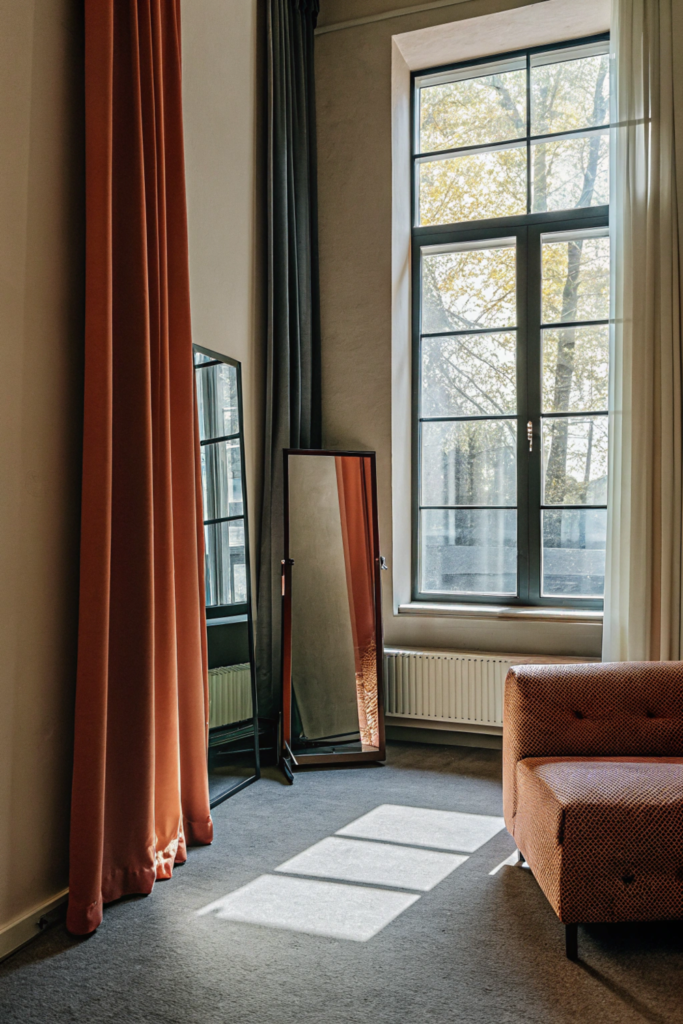
Maximizing natural light enhances minimalist spaces:
- Thoughtful window treatment selection
- Strategic mirror placement
- Furniture arranged to preserve light flow
- Translucent elements for light diffusion
2.Light Control
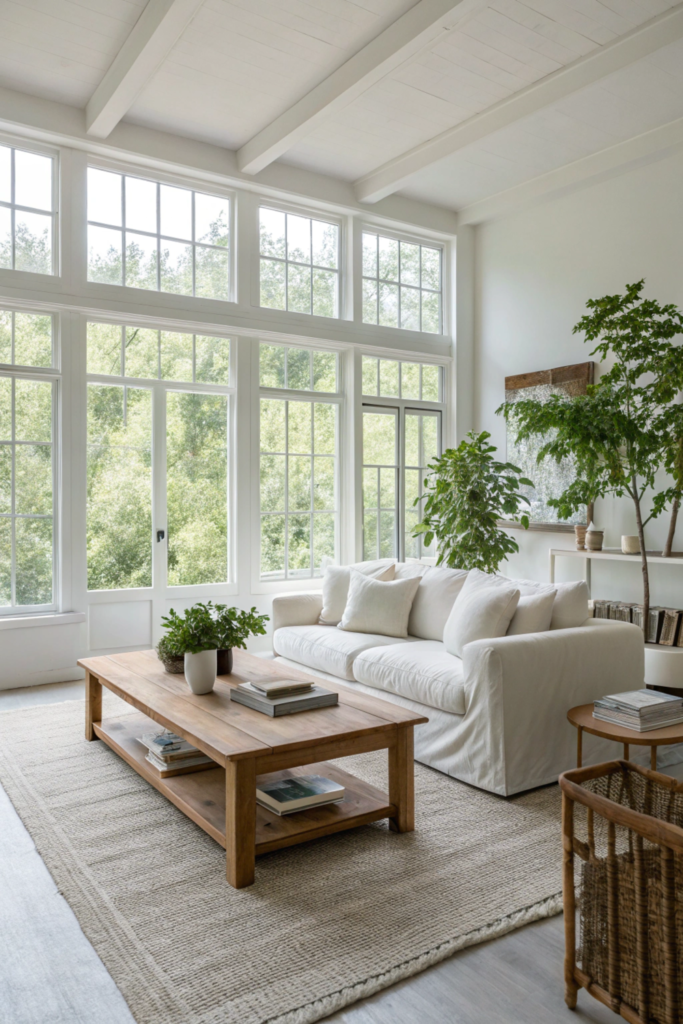
Managing natural light throughout the day:
- Flexible window covering solutions
- Reflective surface placement
- Light-filtering techniques
- Seasonal light considerations
Creating Warmth and Comfort
1.Texture Integration
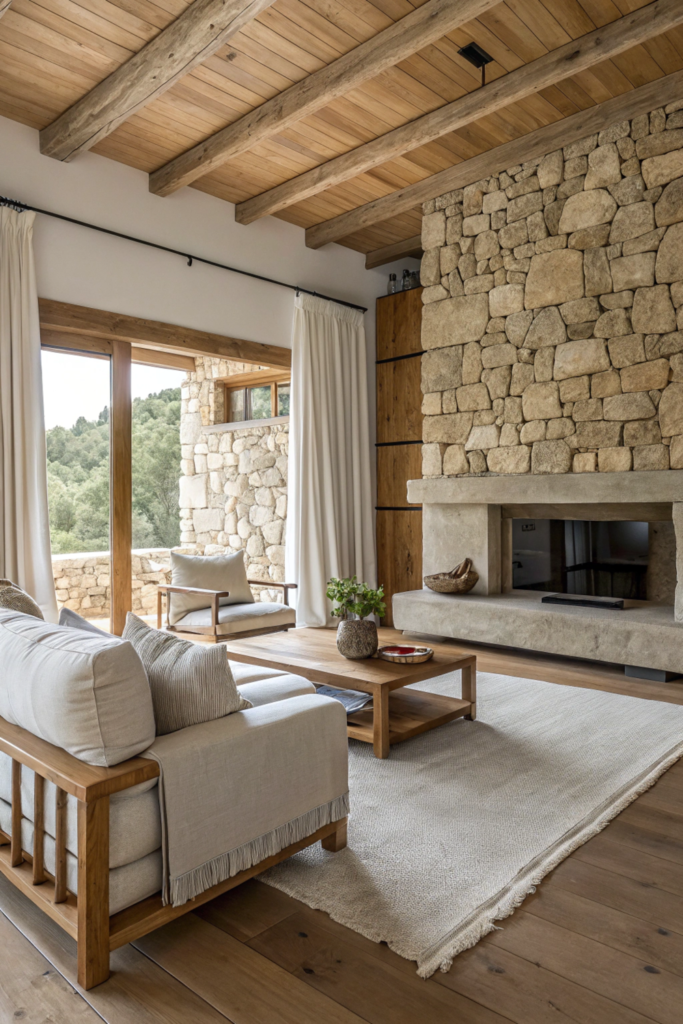
Adding depth through tactile elements:
- Natural materials (wood, stone, linen)
- Layered textile applications
- Contrasting surface textures
- Organic material inclusion
2.Personal Elements
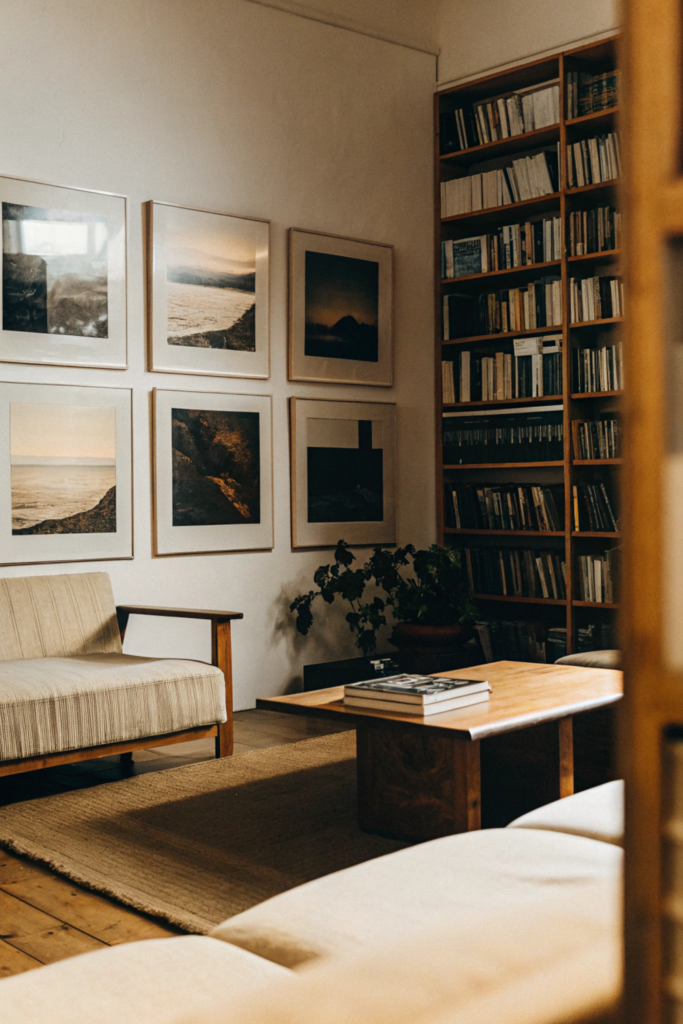
Incorporating meaningful items:
- Curated art selections
- Cohesively framed photographs
- Carefully selected books
- Strategic plant placement
3.Comfort Features
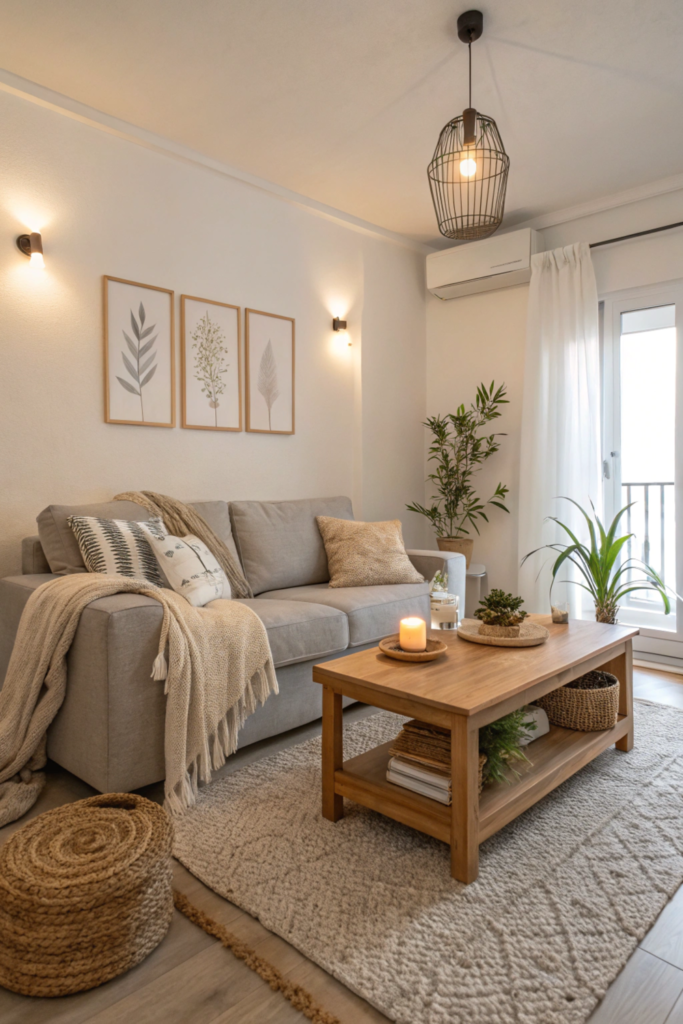
Ensuring livability within minimalism:
- Quality soft furnishings
- Layered lighting solutions
- Designated cozy areas
- Welcoming seating arrangements
Color Schemes and Material Palettes in Minimalist Design.
1.Building Your Monochromatic Base
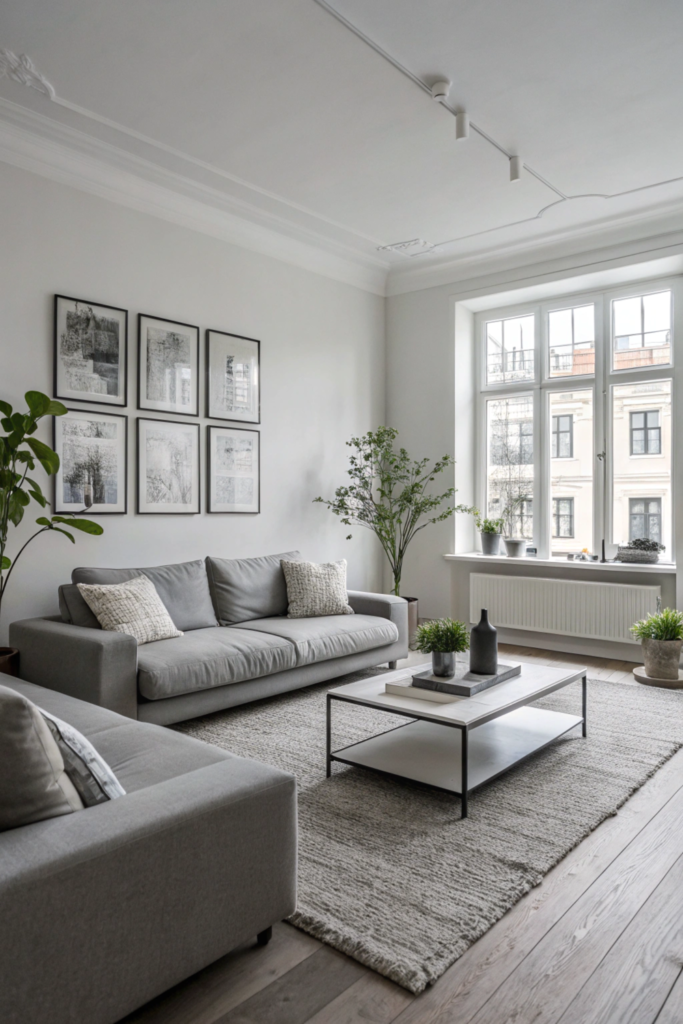
Successful monochromatic schemes rely on subtle variations that create visual depth while maintaining simplicity:
- Master value ranges by understanding how light to dark variations of a single color create dimension
- Generate interest through slight tonal shifts that maintain cohesion
- Utilize different surface finishes (matte, satin, gloss) to create depth without introducing new colors
- Layer similar tones strategically to build complexity while preserving minimalist principles
2.Popular Monochromatic Combinations
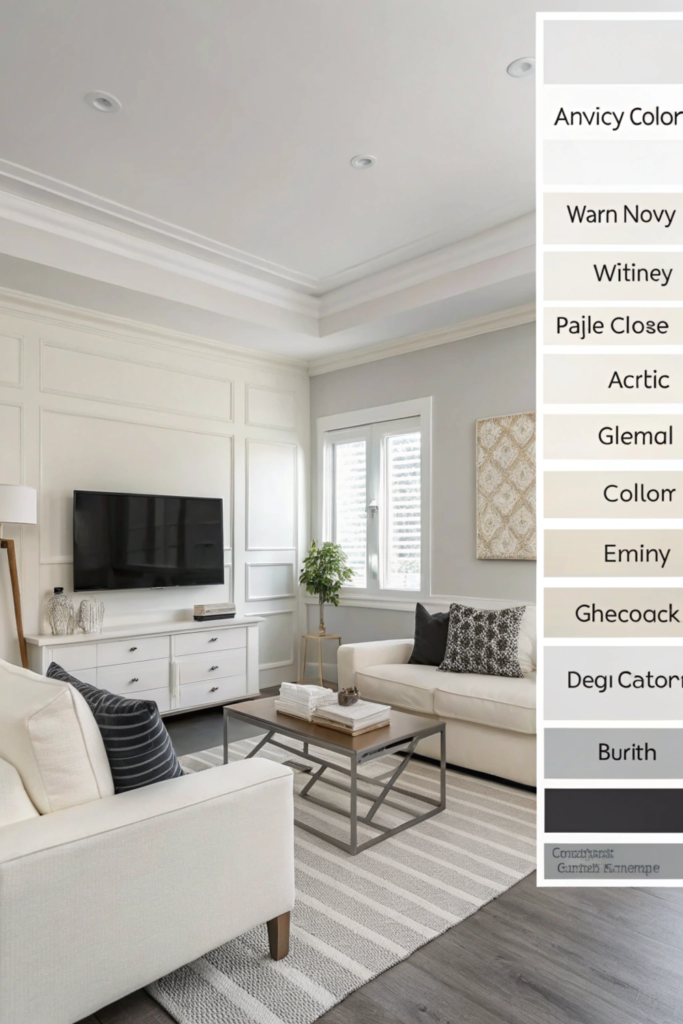
Certain color families lend themselves particularly well to monochromatic schemes:
- White progressions from warm ivory to cool arctic tones
- Grayscale variations ranging from pale silver to deep charcoal
- Earth tone sequences that move through natural color progressions
- Black-focused schemes that play with shadow and light
3.Light and Shadow Dynamics
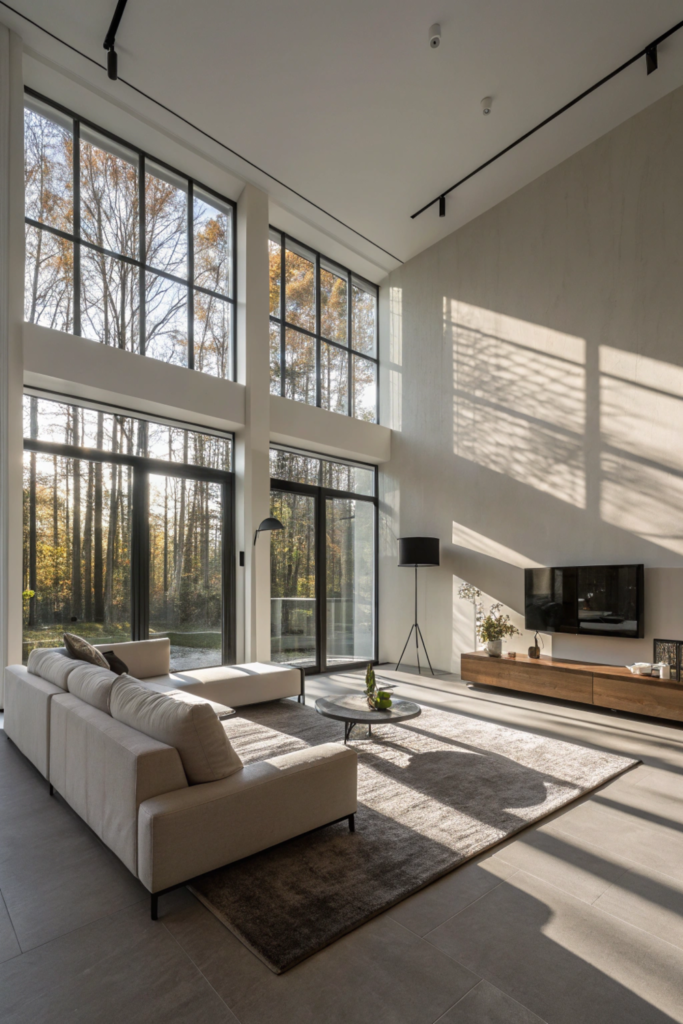
Understanding how light affects monochromatic spaces:
- Natural and artificial lighting dramatically impact color perception
- Architectural features create natural shadow patterns that add depth
- Strategic shadow play adds dimension to monochromatic schemes
- Color appearance shifts throughout the day require careful planning
Working with Neutrals
1.Neutral Base Selection
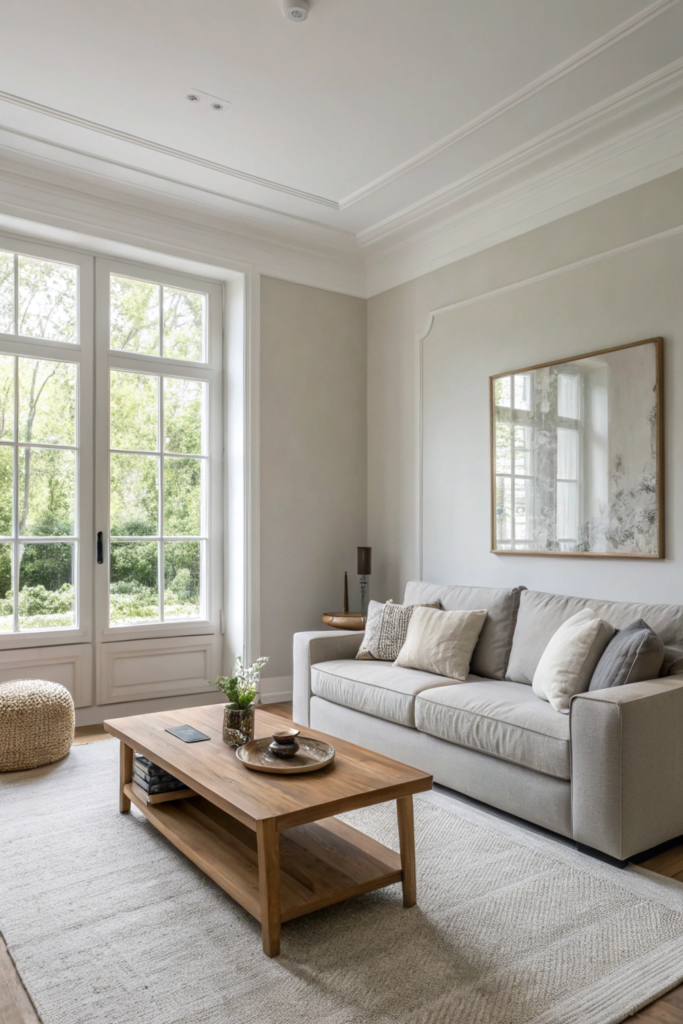
Choosing the right neutral foundation:
- Determine whether warm or cool neutrals better suit your space
- Identify and work with underlying color temperatures
- Establish a clear hierarchy of neutral tones
- Create balance between light and dark elements
2.Effective Neutral Combinations
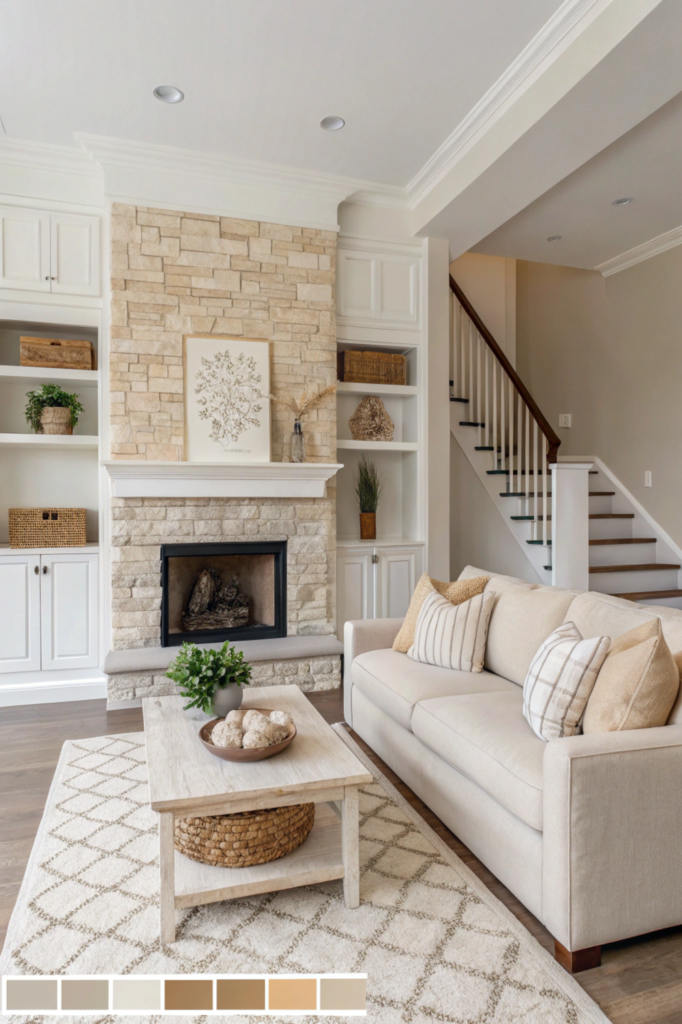
Proven neutral pairings that maintain visual interest:
- White and beige combinations that create warmth without heaviness
- Greige applications that bridge warm and cool tones
- Taupe and cream harmonies that offer sophisticated depth
- Stone-inspired palettes that reference natural color progressions
3.Avoiding Common Pitfalls
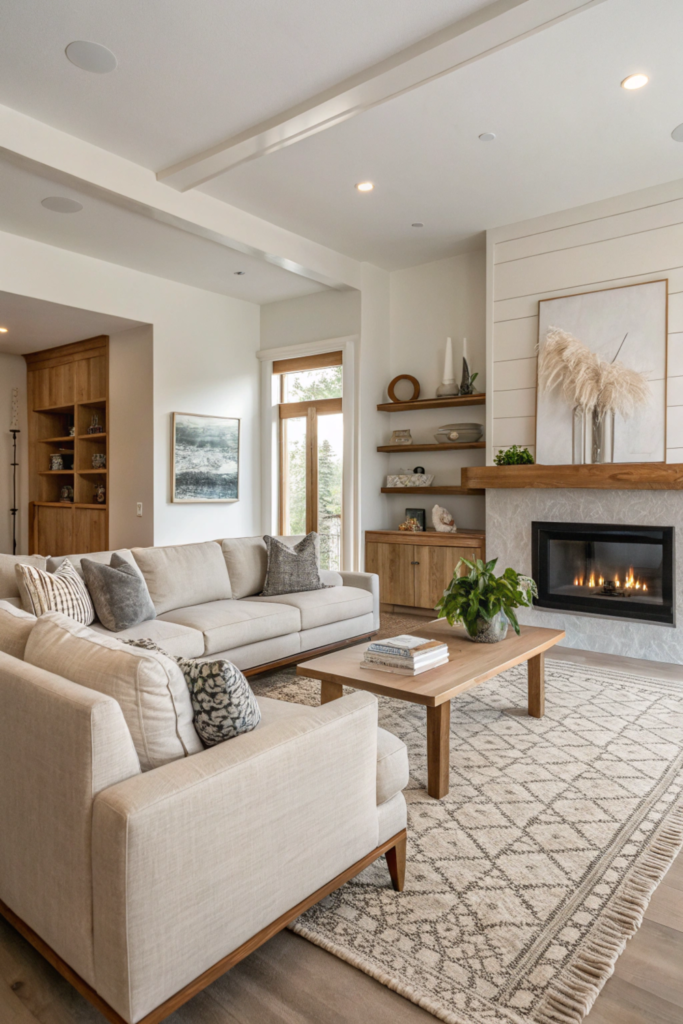
Maintain interest while working with neutrals:
- Prevent monotony through subtle variation
- Balance warm and cool undertones effectively
- Create smooth transitions between spaces
- Maintain visual interest through texture and finish variation
Texture Integration
1.Subtle Texture Applications
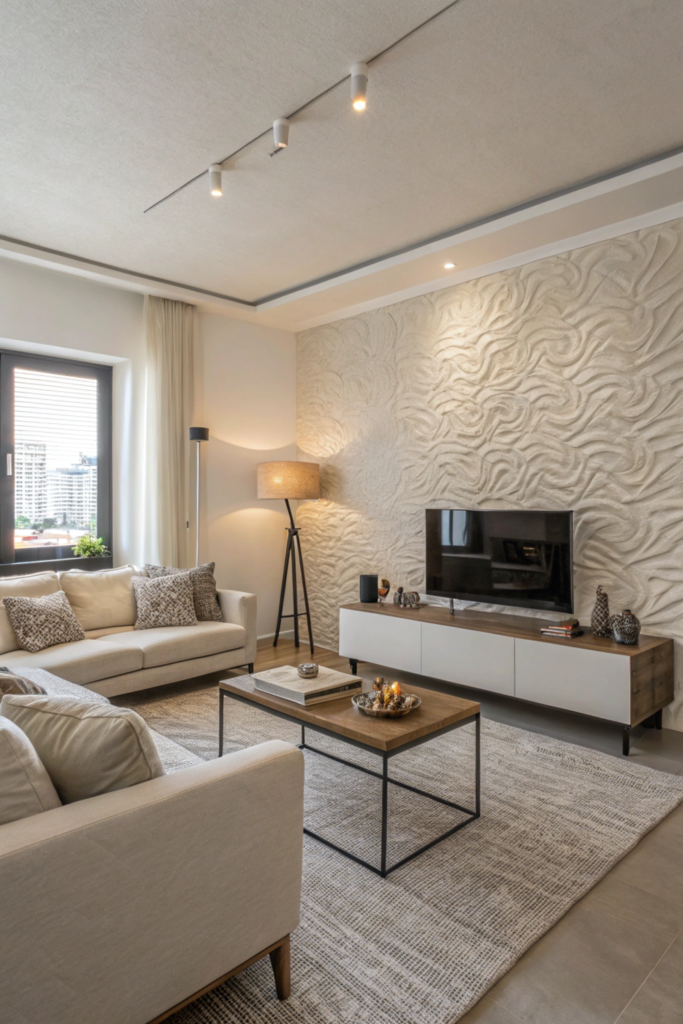
Adding depth without overwhelming:
- Incorporate woven materials that add tactile interest
- Use natural fibers to introduce organic texture
- Select textured wallpapers that create subtle dimension
- Choose fabrics with tactile appeal that maintain visual simplicity
2.Material Contrasts
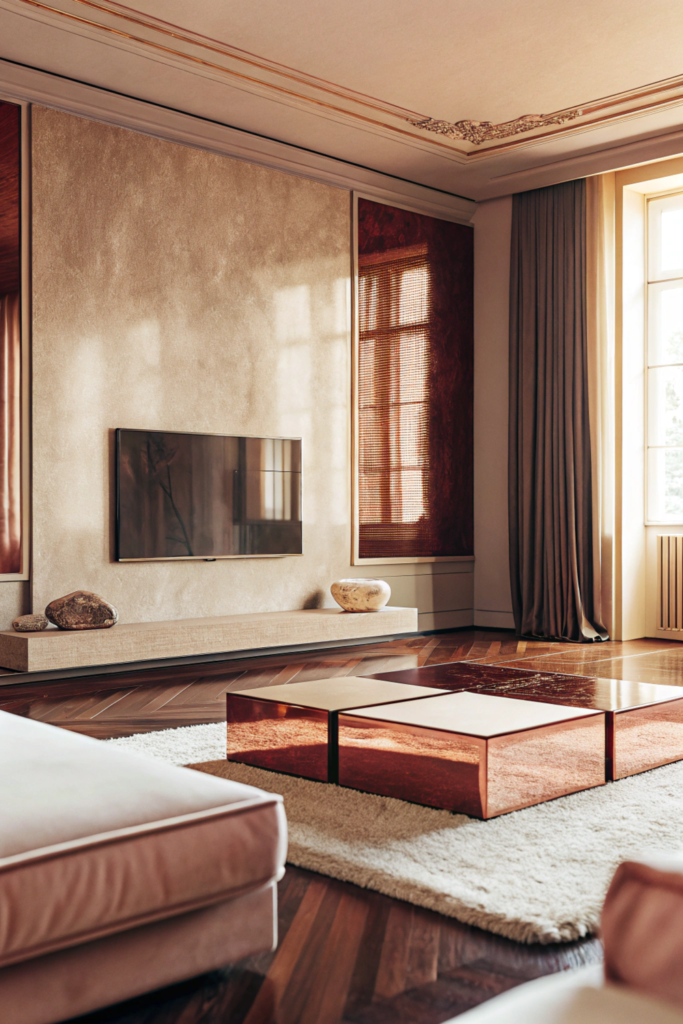
Creating interest through thoughtful opposition:
- Balance smooth and rough surfaces
- Mix matte and glossy finishes strategically
- Combine hard and soft elements effectively
- Blend organic and manufactured textures
3.Layering Techniques
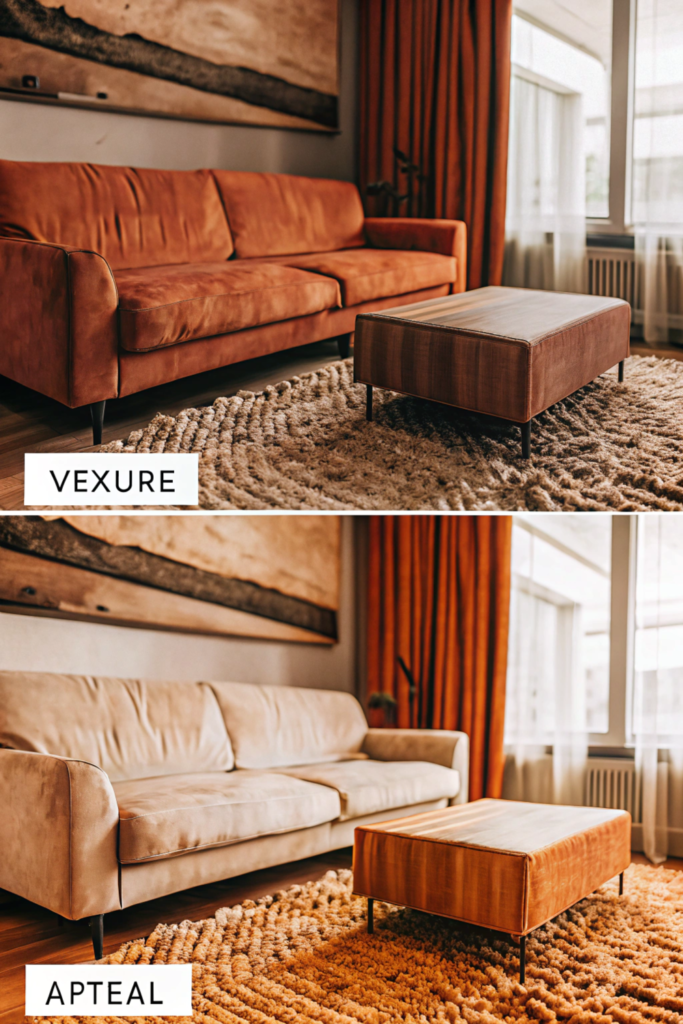
Building depth through careful composition:
- Place textures strategically throughout the space
- Balance varying texture densities
- Consider visual weight in texture distribution
- Adjust textural elements seasonally
Natural Materials
1.Wood Elements
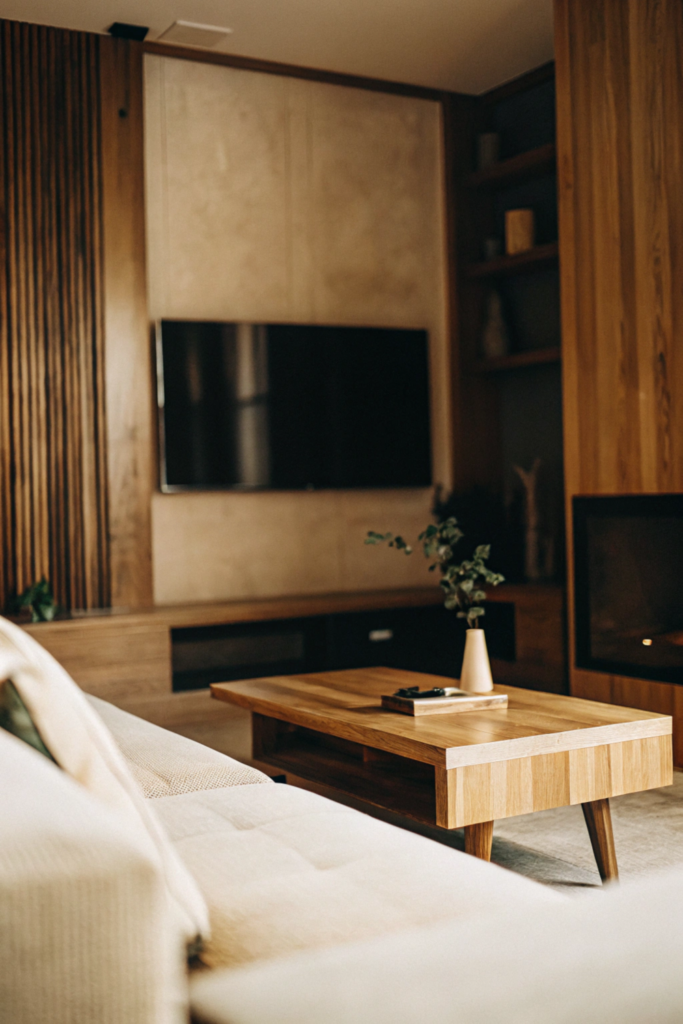
Incorporating wood thoughtfully:
- Choose between light and dark wood tones
- Utilize grain patterns for subtle visual interest
- Select appropriate finishes for different applications
- Mix wood types successfully
2.Stone and Concrete
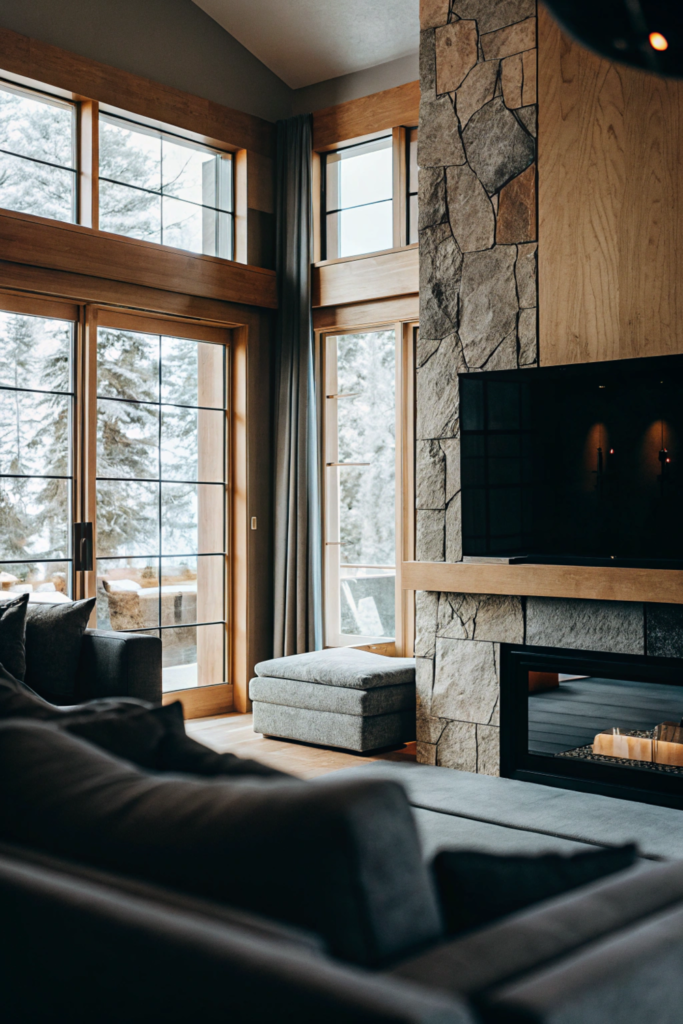
Using hard materials effectively:
- Select natural stone that complements the space
- Incorporate polished concrete thoughtfully
- Create interest through textural variation
- Consider material temperature in the space
3.Natural Fibers
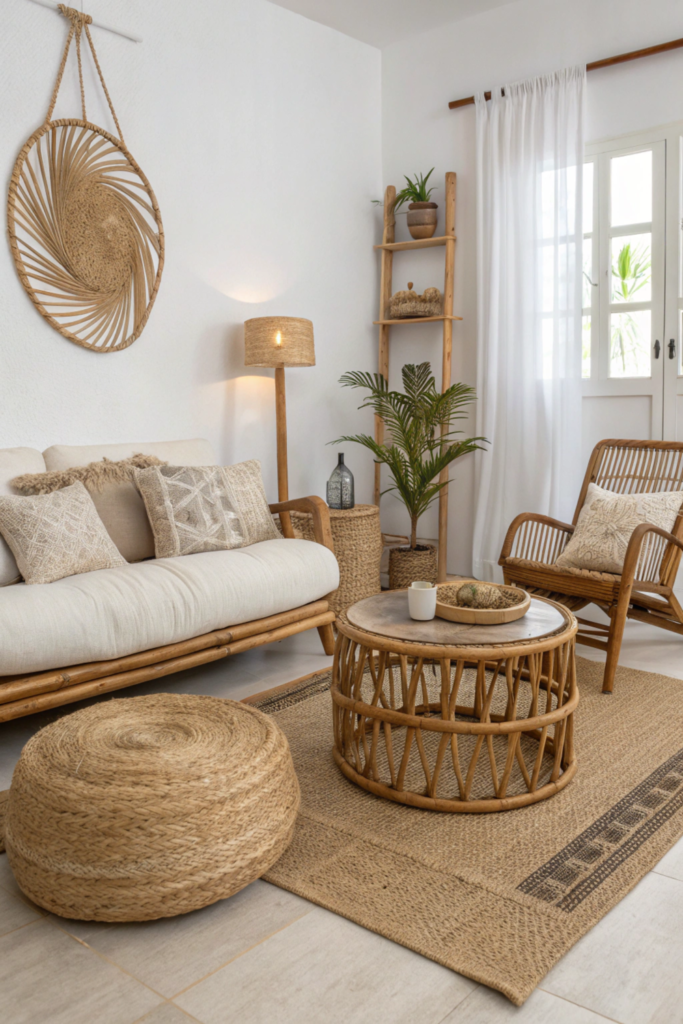
Integrating soft natural materials:
- Use jute and sisal for organic texture
- Incorporate cotton and linen for softness
- Add wool for warmth and depth
- Include bamboo and rattan thoughtfully
Accent Color Strategy
1.Color Selection
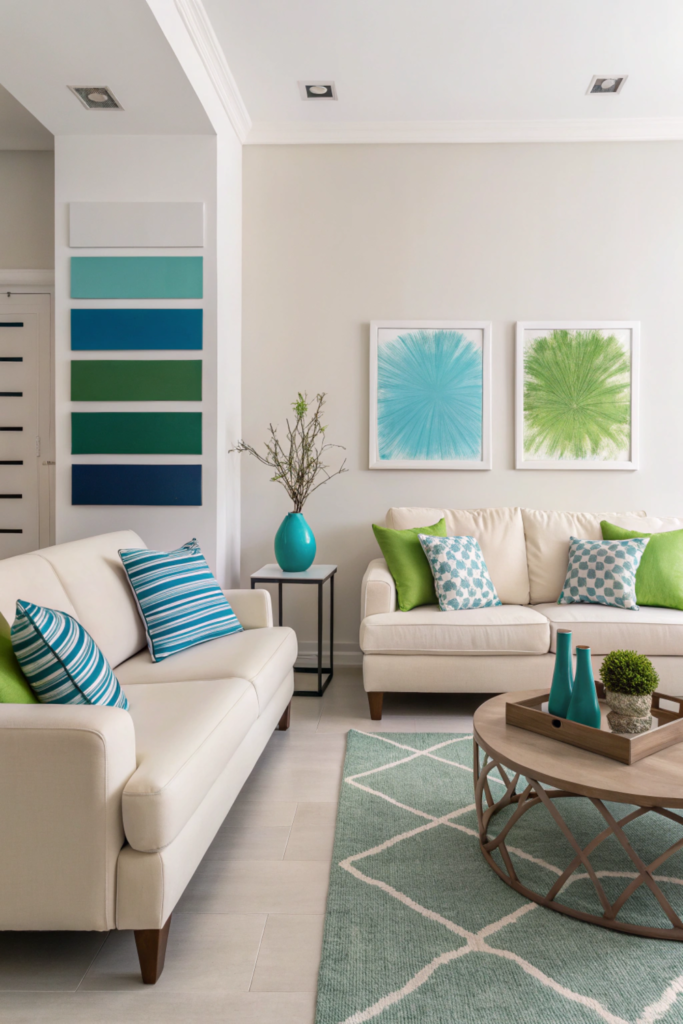
Choosing and using accent colors:
- Apply color psychology principles
- Select appropriate intensity levels
- Plan for seasonal changes
- Integrate trends thoughtfully
2.Placement and Distribution
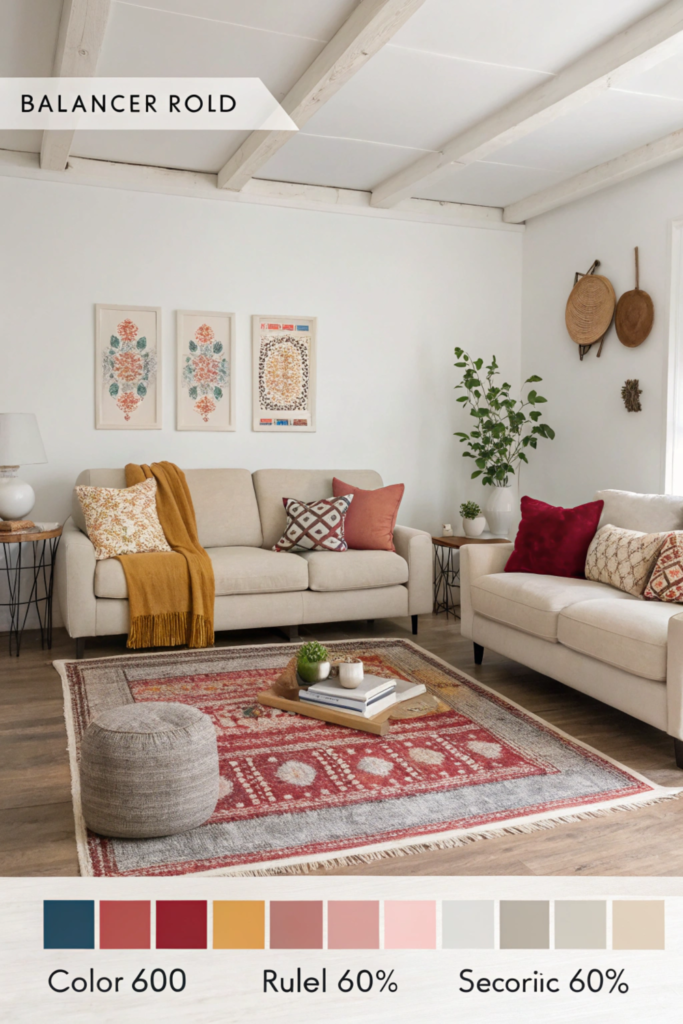
Following the 60-30-10 rule:
- Main color: 60% of space
- Secondary color: 30% of space
- Accent color: 10% of space
- Create balanced distribution throughout
3.Implementation Methods
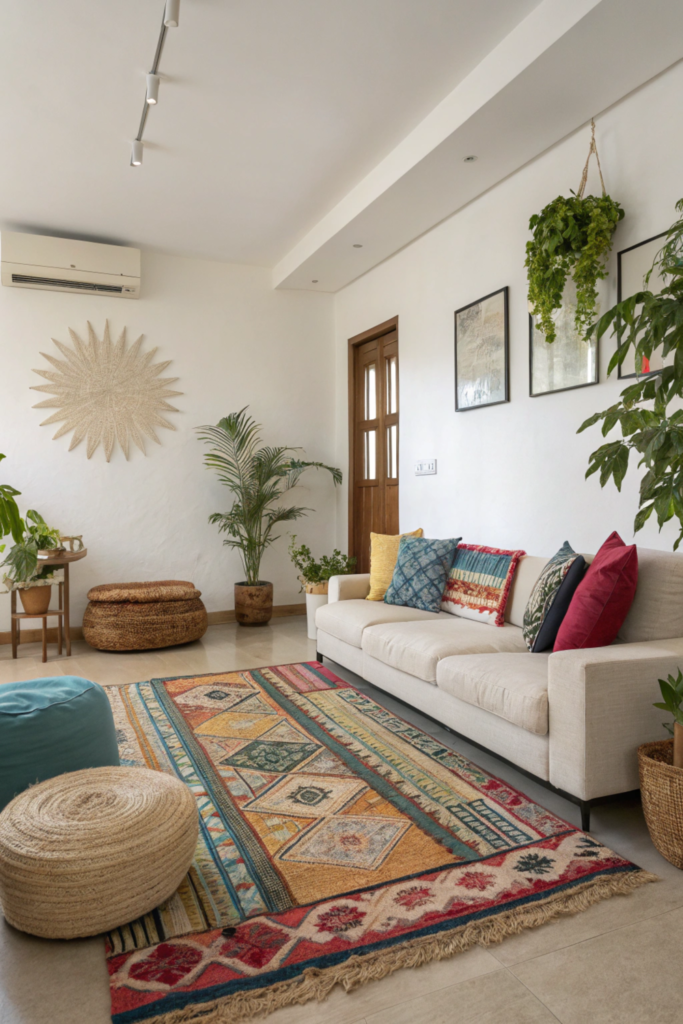
Varying permanence levels:
- Use easily changeable elements for flexibility
- Incorporate semi-permanent colored elements
- Plan permanent colored features carefully
- Include plants for natural color accents
4.Evolution and Maintenance
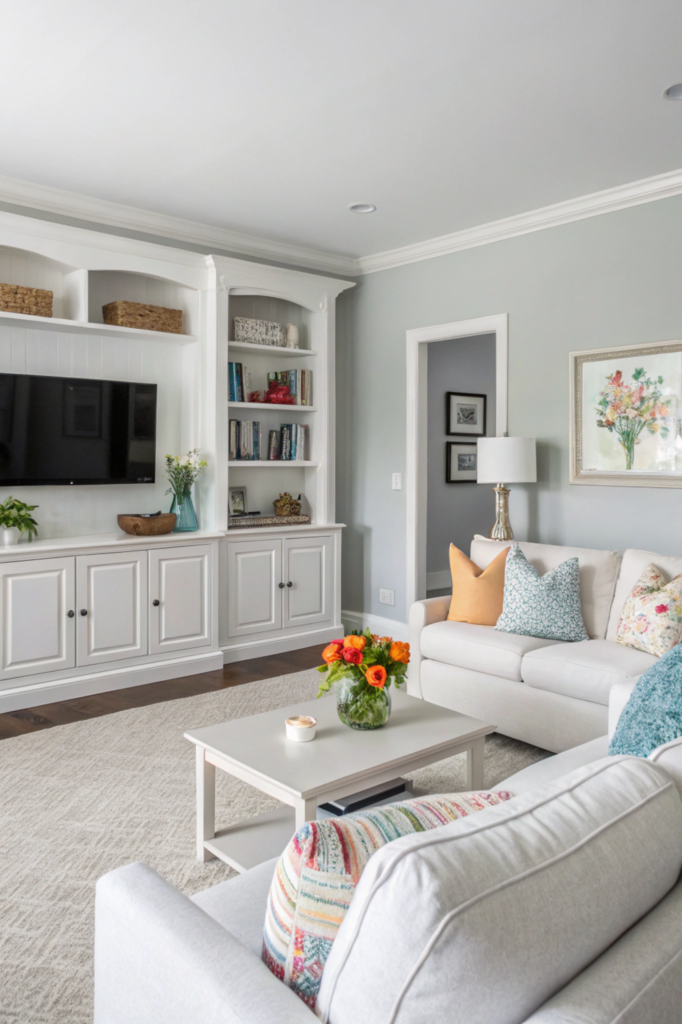
Managing color over time:
- Plan for seasonal transitions
- Update accents periodically
- Maintain color scheme consistency
- Develop long-term color strategies
Core Pieces for a Minimalist Space
1.Modular sofas with hidden storage compartments
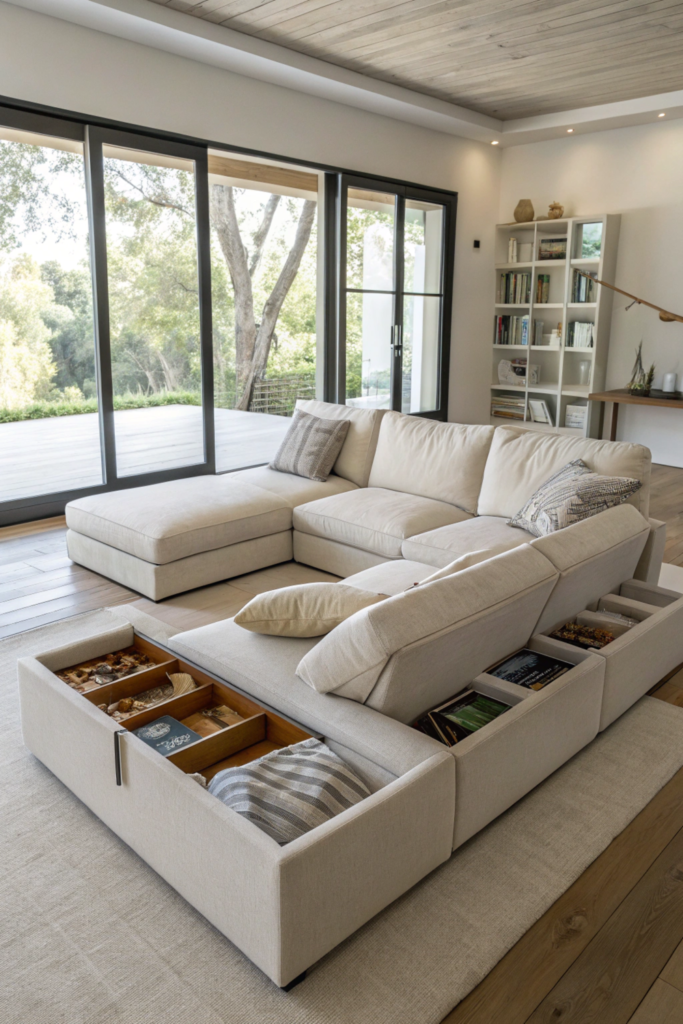
Modular Sofas
- Storage capacity: 12-15 cubic feet
- Sections: 30-36″ wide each
- Hidden compartments under seats
- Removable cushions
- Washable covers
2.Expandable dining tables that transform for different occasions
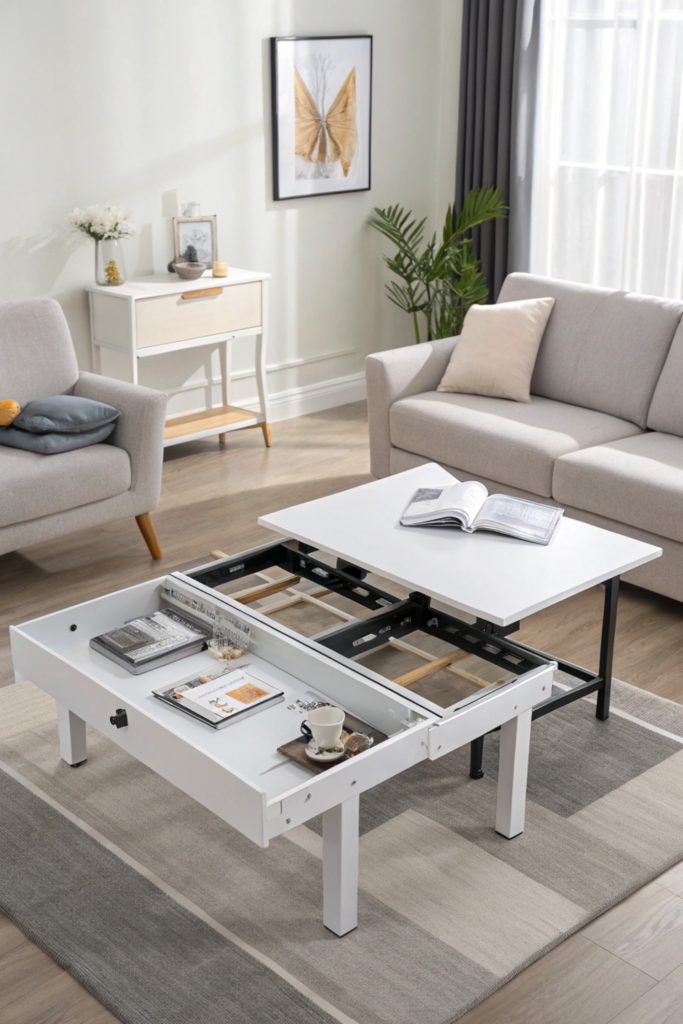
Expandable Tables
- Collapsed size: 36-48″
- Extended: adds 24-36″
- Storage for leaves
- Mechanism types: butterfly, drop-leaf
- Weight capacity: 200+ lbs
3.Wall-mounted desks that fold away when not in use
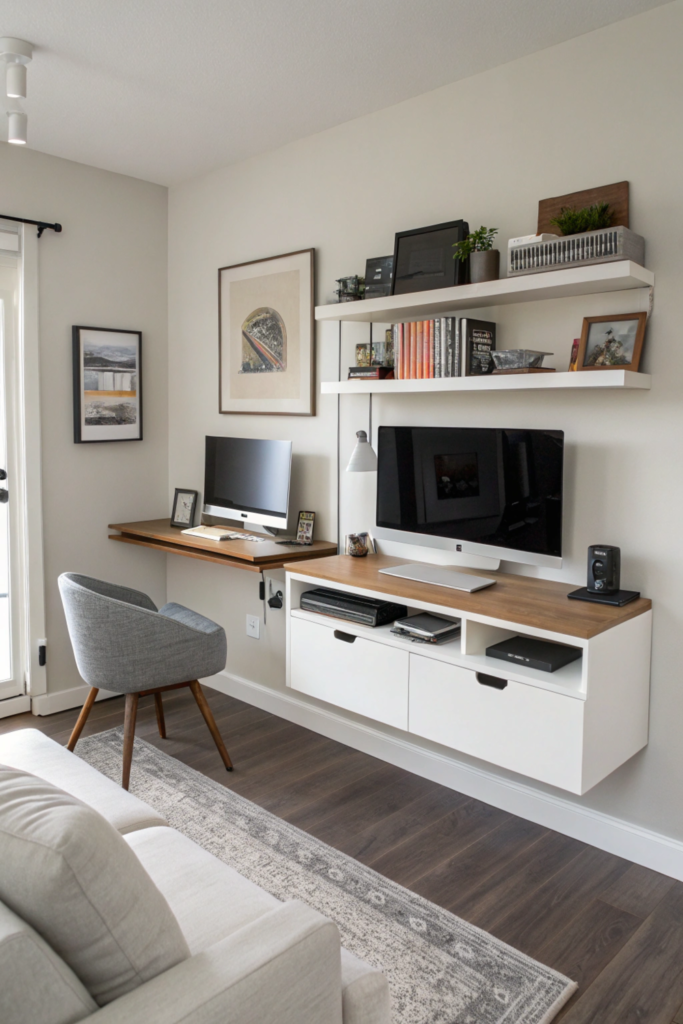
Wall-mounted Desks
- Desktop size: 24-36″ deep
- Height: 29-30″ from floor
- Weight capacity: 50-75 lbs
- Cable management integration
- Locking mechanisms
4.Nesting tables that stack for space efficiency
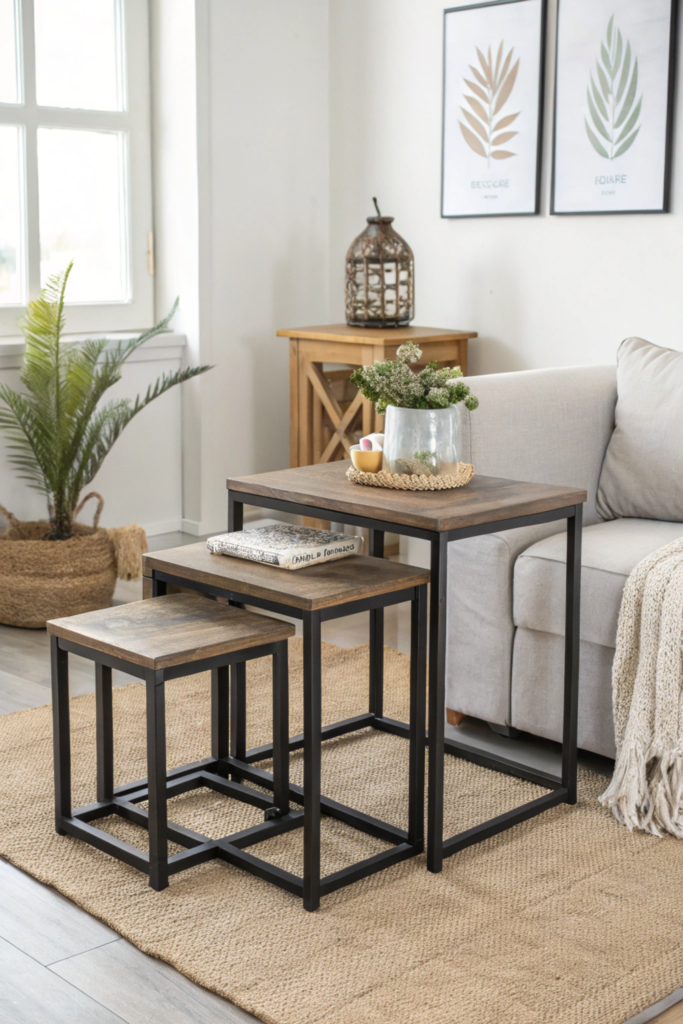
Nesting Tables
- 3-piece sets common
- Height differences: 2-4″
- Largest: 24″ square
- Smallest: 12″ square
- Stackable clearance needed
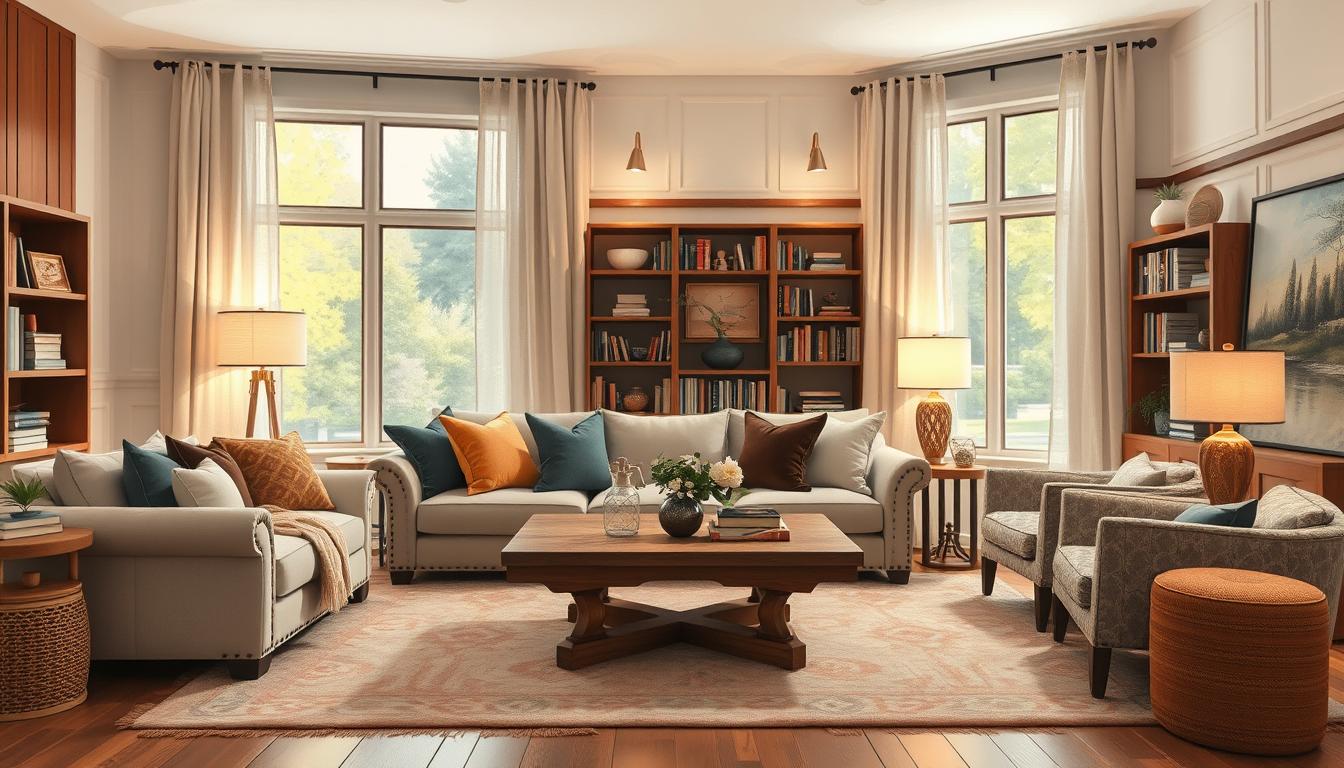
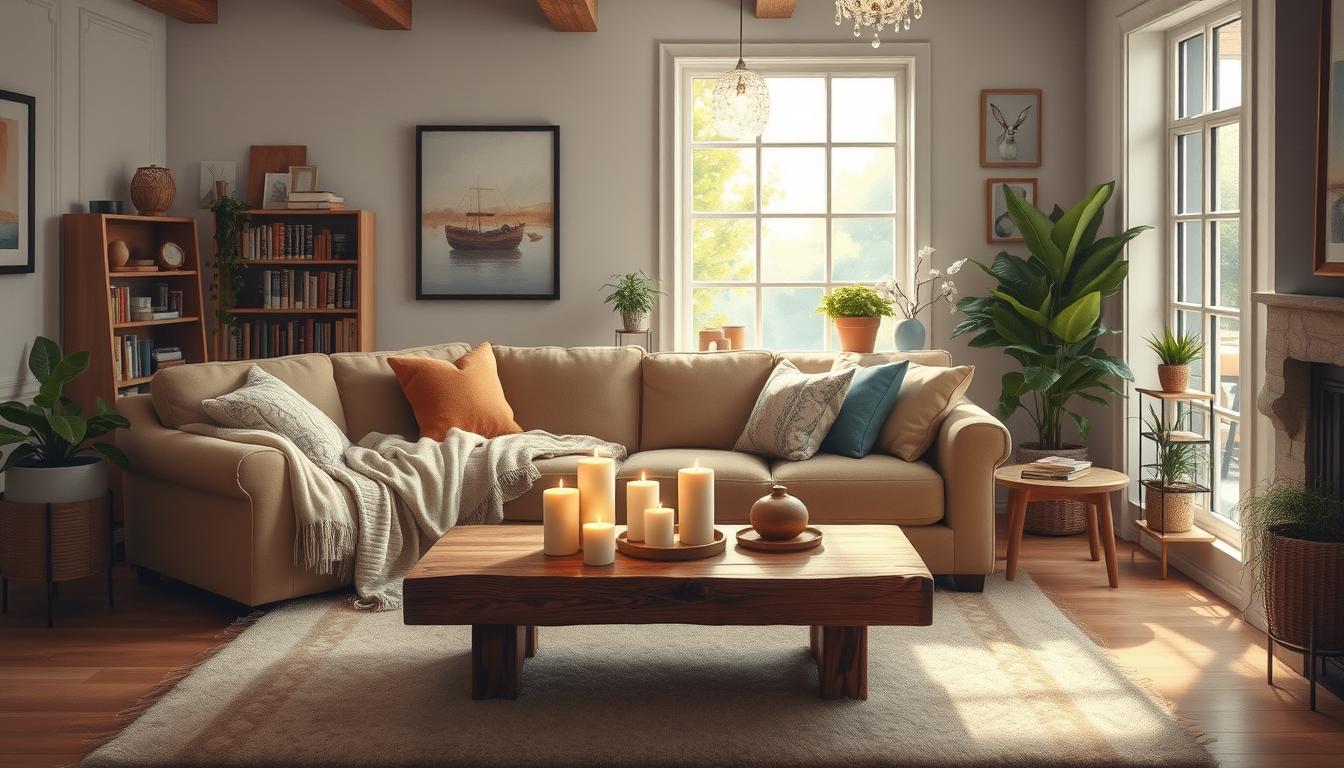
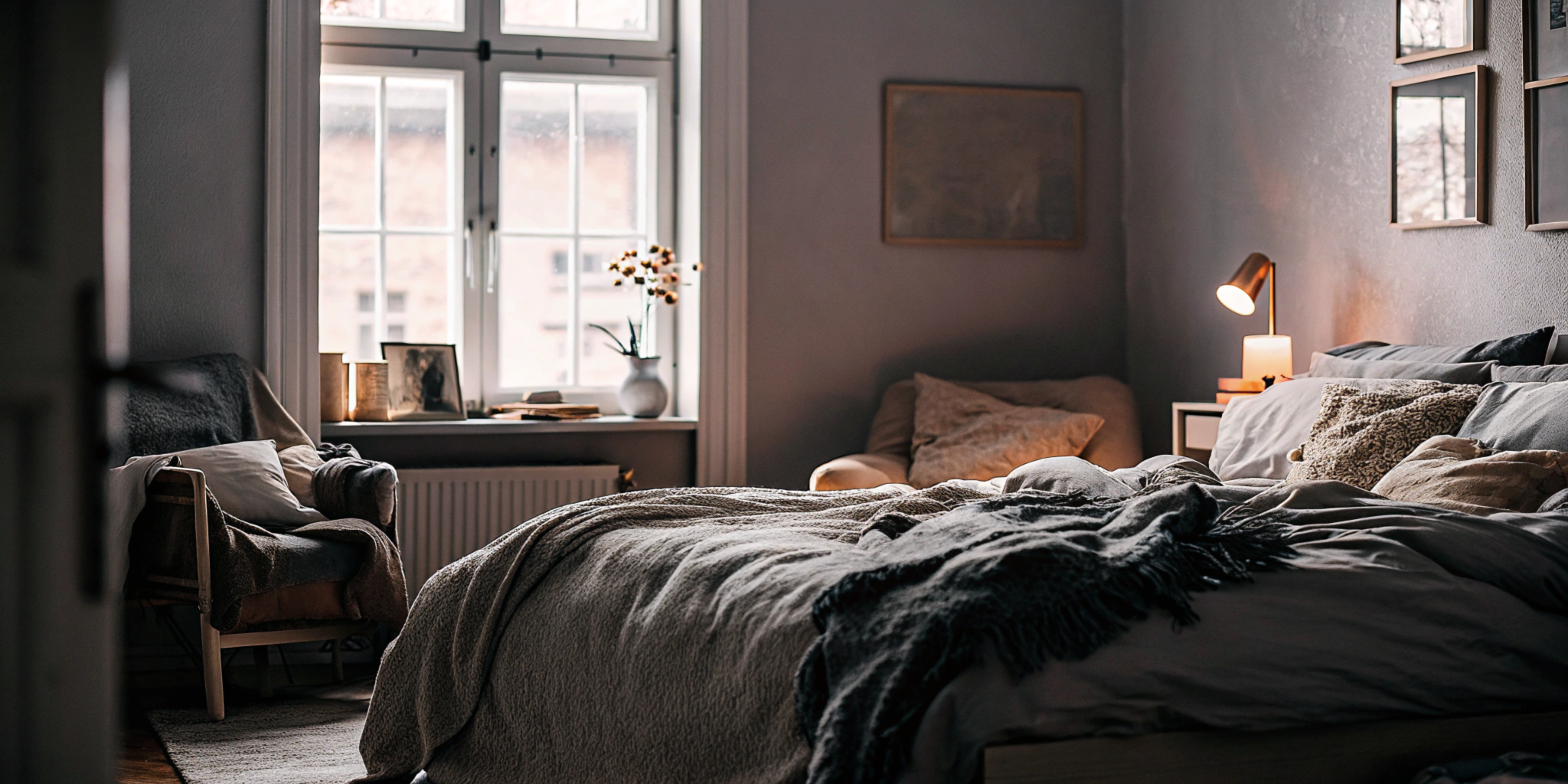
Leave a Comment